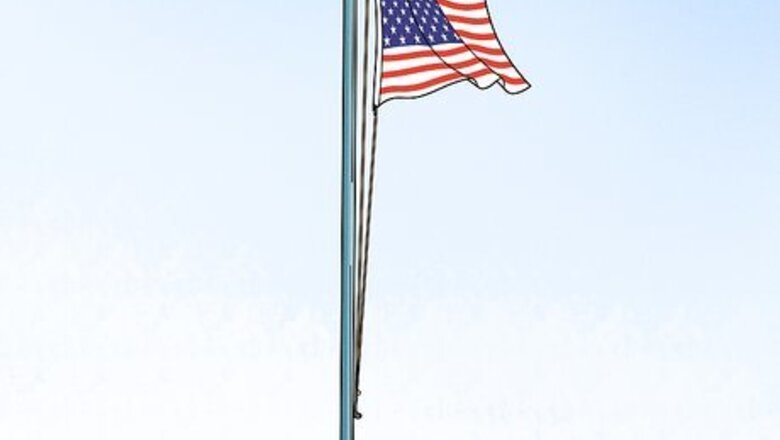
views
What does it mean to hoist a flag?
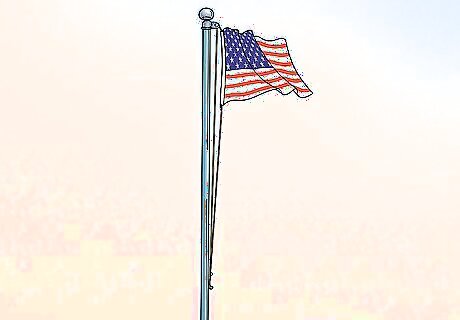
It means to raise a flag to its highest position. The term “hoist” can be used to describe a flag or a sail on a ship. When you hoist a flag, you’re lifting it up to its highest possible position on a flag pole so it’s as visible as possible. The term “half-mast” means to raise a flag to the halfway position on a flag pole. It’s usually done as a mark of respect for the dead or as a signal of distress.
What is used to hoist a flag?
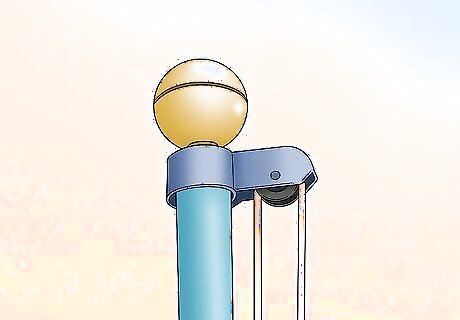
A pulley system is used to hoist a flag up a pole. The pulley system uses a rope attached to the flag pole and a simple pulley, which is a machine consisting of a wheel with a groove to hold the rope. Most flagpoles use a fixed pulley that allows you to pull down on the rope and raise the flag. Larger flagpoles may use an electronic pulley that can handle the heavier rope or wire used to hoist the flag.
How do you hoist a flag on a flagpole?
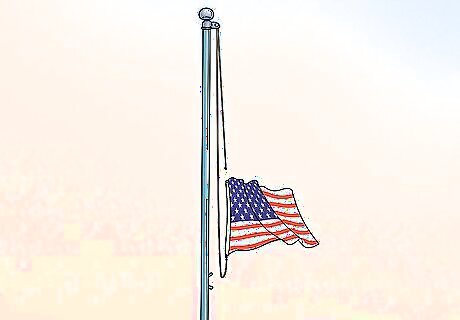
Attach the rope to the top and bottom of the flag. The rope that connects the flag to the flag pole is called the halyard. Tie a loop at 1 end of the halyard and attach it to the toggle at the top of the flag. If there isn’t a toggle, tie a knot to attach the halyard to the loop at the top of the flag. Then, tie the other end of the halyard to the short rope connected to the bottom of the flag. Make sure the flag is oriented correctly so it flies in the right direction and is right-side up.
Pull the rope to hoist the flag until it’s tight. Grab the halyard and pull it down to start raising the flag upward. Continue pulling until the flag reaches the very top of the pole. Keep the halyard nice and taut so the flag stays close to the pole. Make sure there isn’t any slack in the halyard.
Tie the halyard to the cleat using a figure-8 pattern. Keeping the halyard taut, wrap it around the cleat of the flag pole, which is a piece of hardware attached to the pole that you use to tie the rope to so it doesn’t come loose. Continue looping it over the cleat in a figure-8 pattern so it’s securely connected to the cleat and won’t come undone.
What are the rules for flag hoisting?
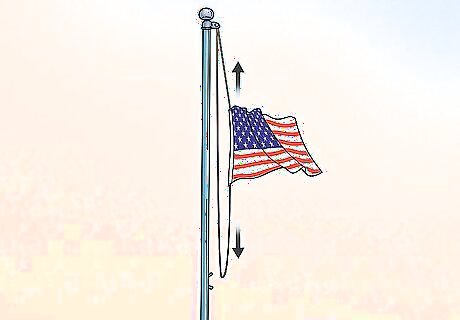
Hoist the flag quickly when you raise it. Once the flag is securely attached to the halyard on the flag pole, pull the halyard swiftly to hoist the flag briskly. Whenever it’s time to take it down, untie the halyard from the cleat, lower the flag slowly, and remove it with respect and care.
Show the flag respect at all times. Never display the flag upside-down or allow it to touch anything below it such as the ground. If the flag is torn or dirty, destroy it. Don’t fly a flag that’s in poor condition. Never hoist a flag in inclement weather unless it’s an all-weather flag that can handle the elements.
Display flags from sunrise to sunset. Attach your flag to the flagpole and hoist it just as the sun is rising in the morning. Allow the flag to fly all day long (unless it starts raining). Just as the sun begins to set, slowly and respectfully lower the flag and remove it from the halyard.
What is the difference between flag hoisting and unfurling?

You attach the flag at the top of the flagpole when you unfurl it. Hoisting involves tying the flag at the bottom of the flag pole and then raising it to the top. By contrast, unfurling involves tying the flag at the top of the pole and allowing it to unfurl without raising it. In countries like India, the hoisting commemorates their Independence, while unfurling is done to signify that the country is already independent.

















Comments
0 comment